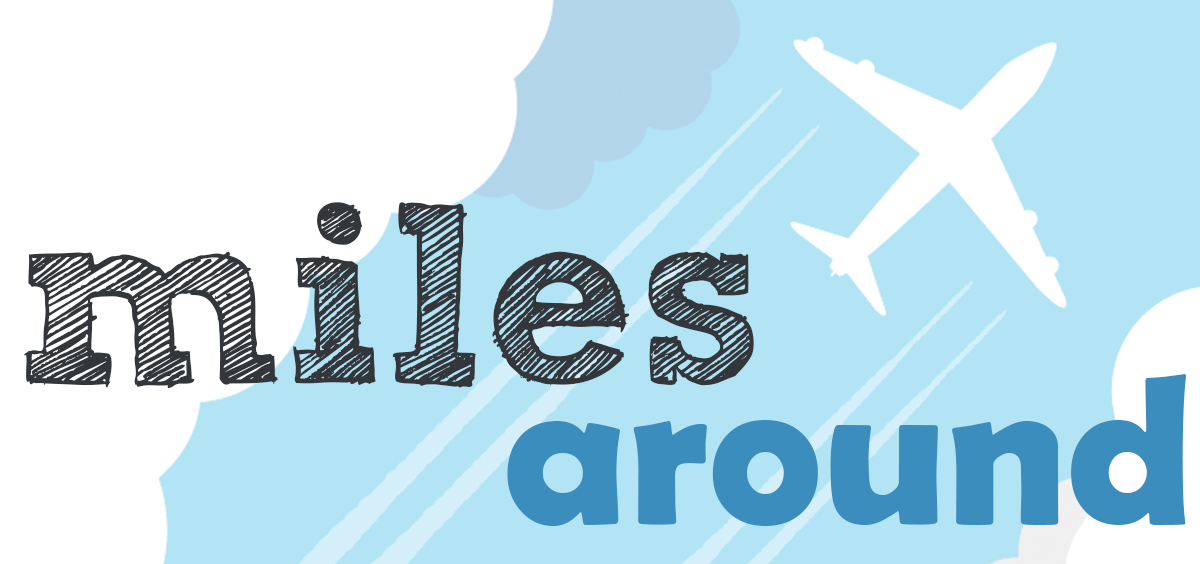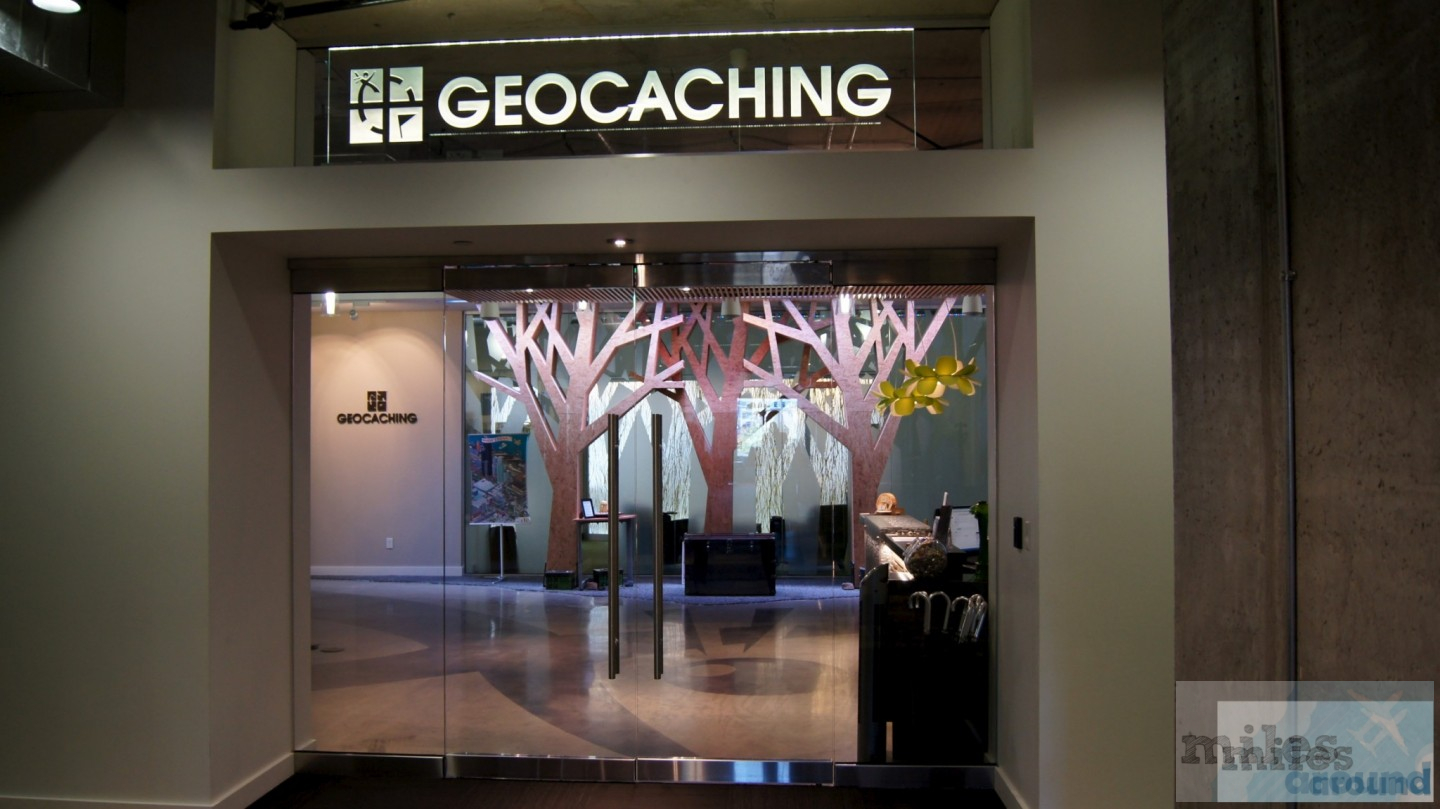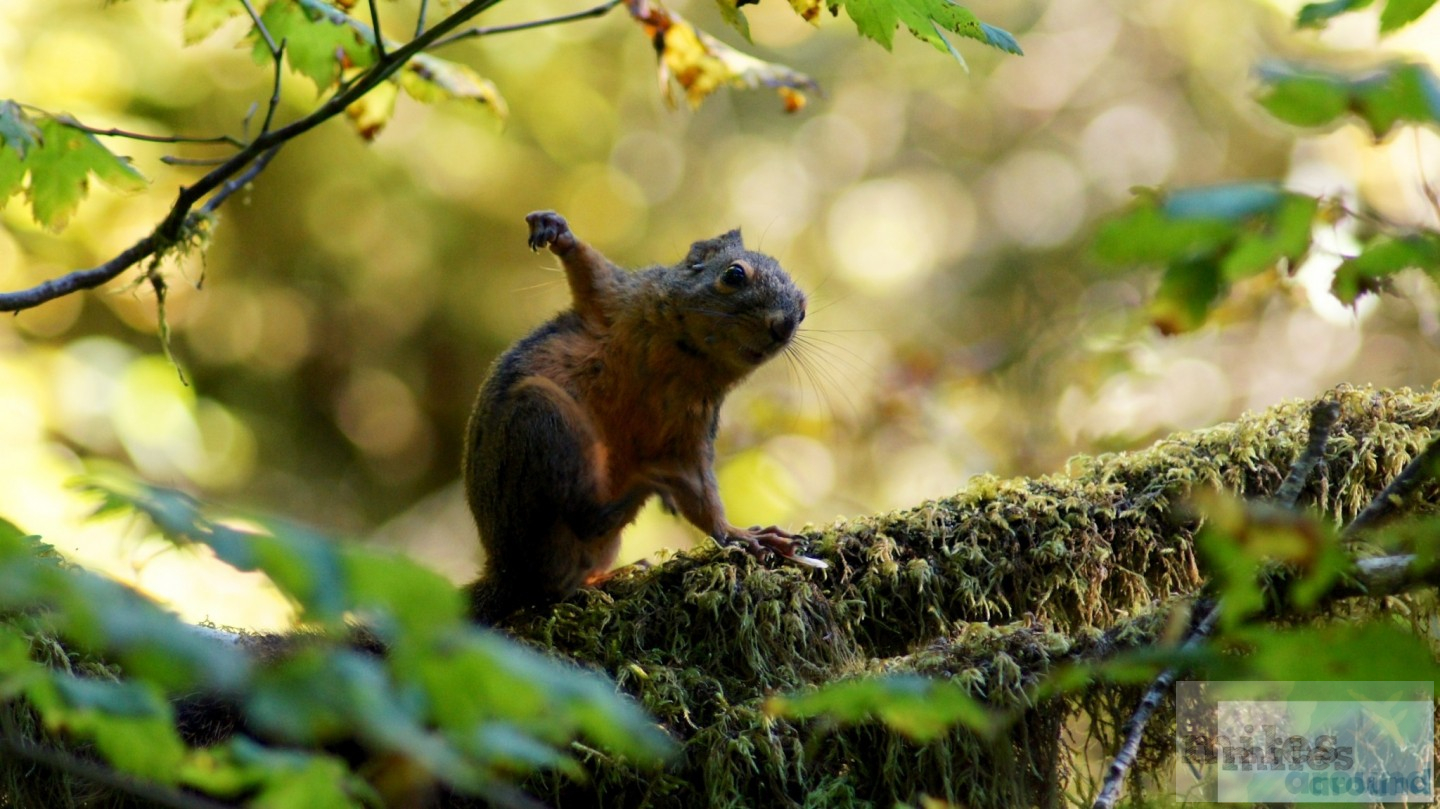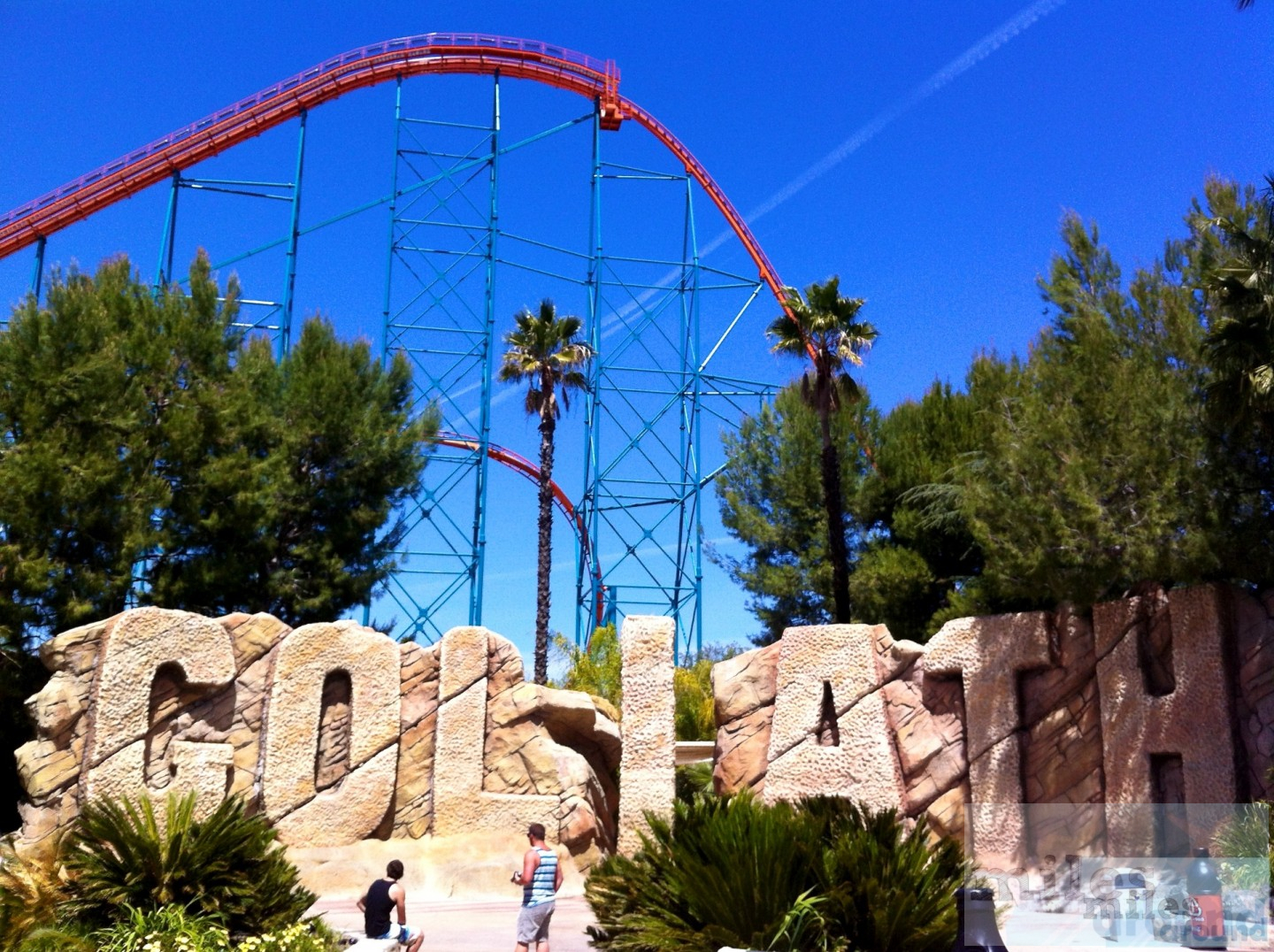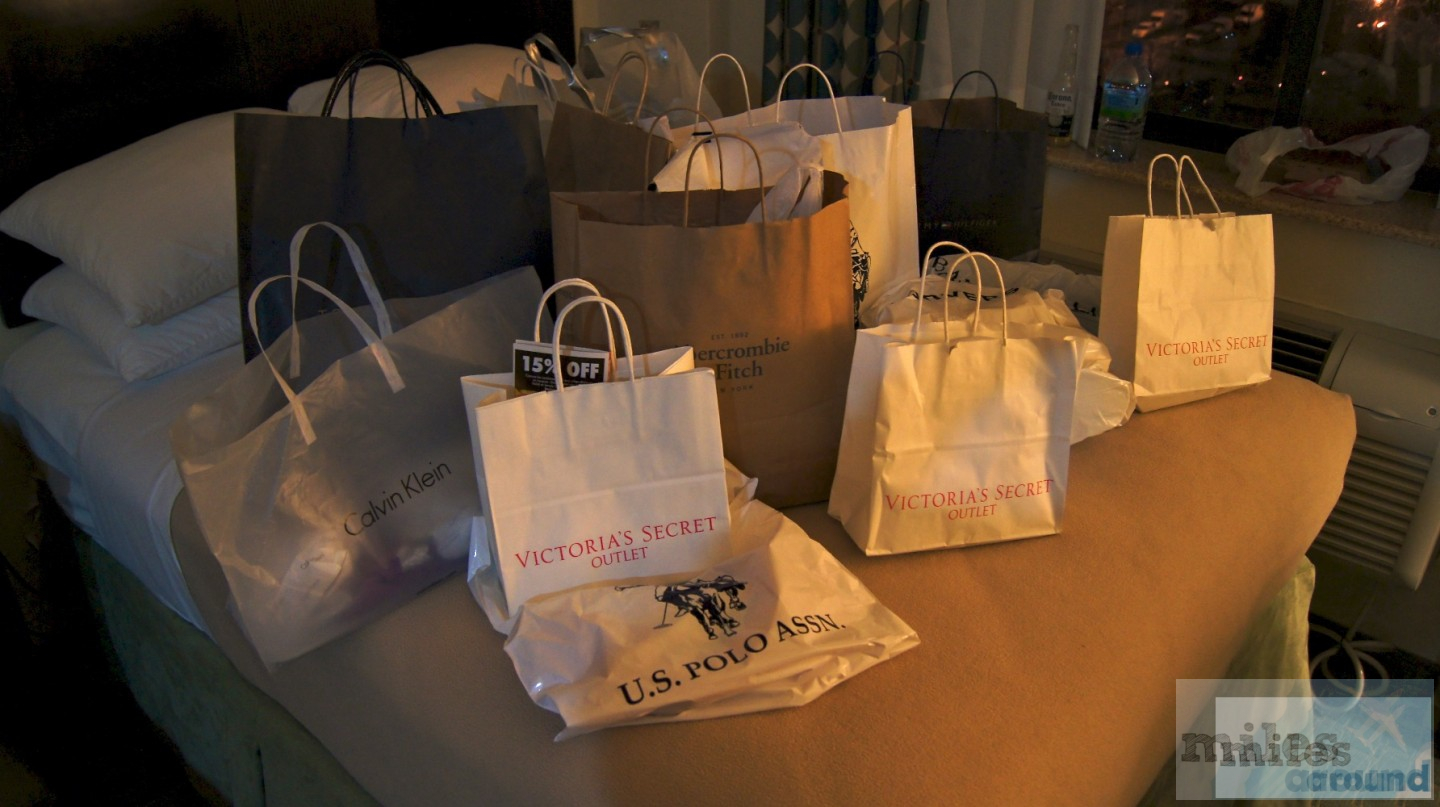We had made an appointment at the geocaching headquarters for the afternoon. So we drove to the Fremont district, a kind of artists' quarter, and looked for the origin of geocaching. Since there was still a little time before our appointment at 2 p.m., we first completed a geo tour. This tour, consisting of nine caches of all currently available geocache types, was very varied and beautifully designed. We passed the Fremont Troll, the Public Library or a small rocket. We also encountered one of the largest trackables in the world on a newspaper box.
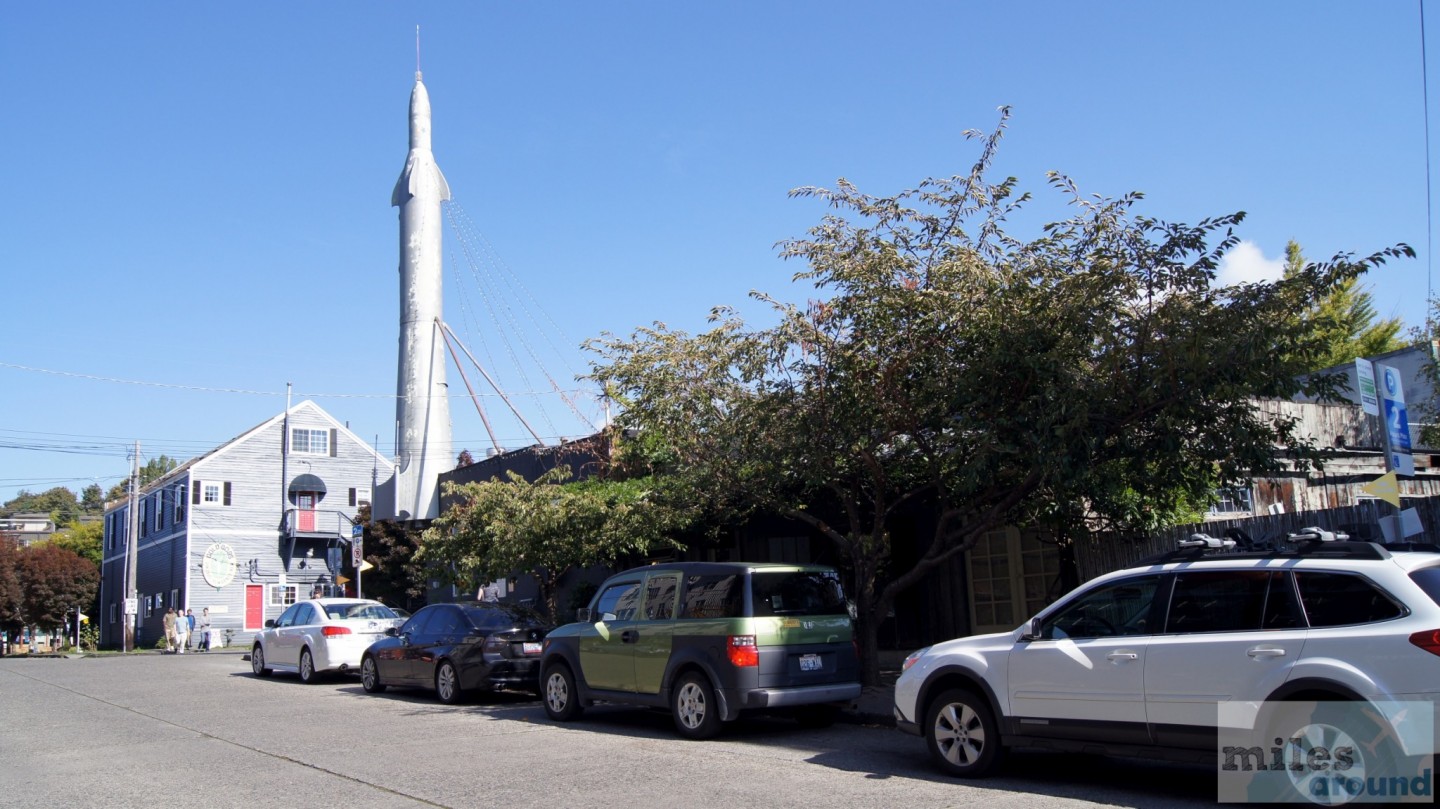
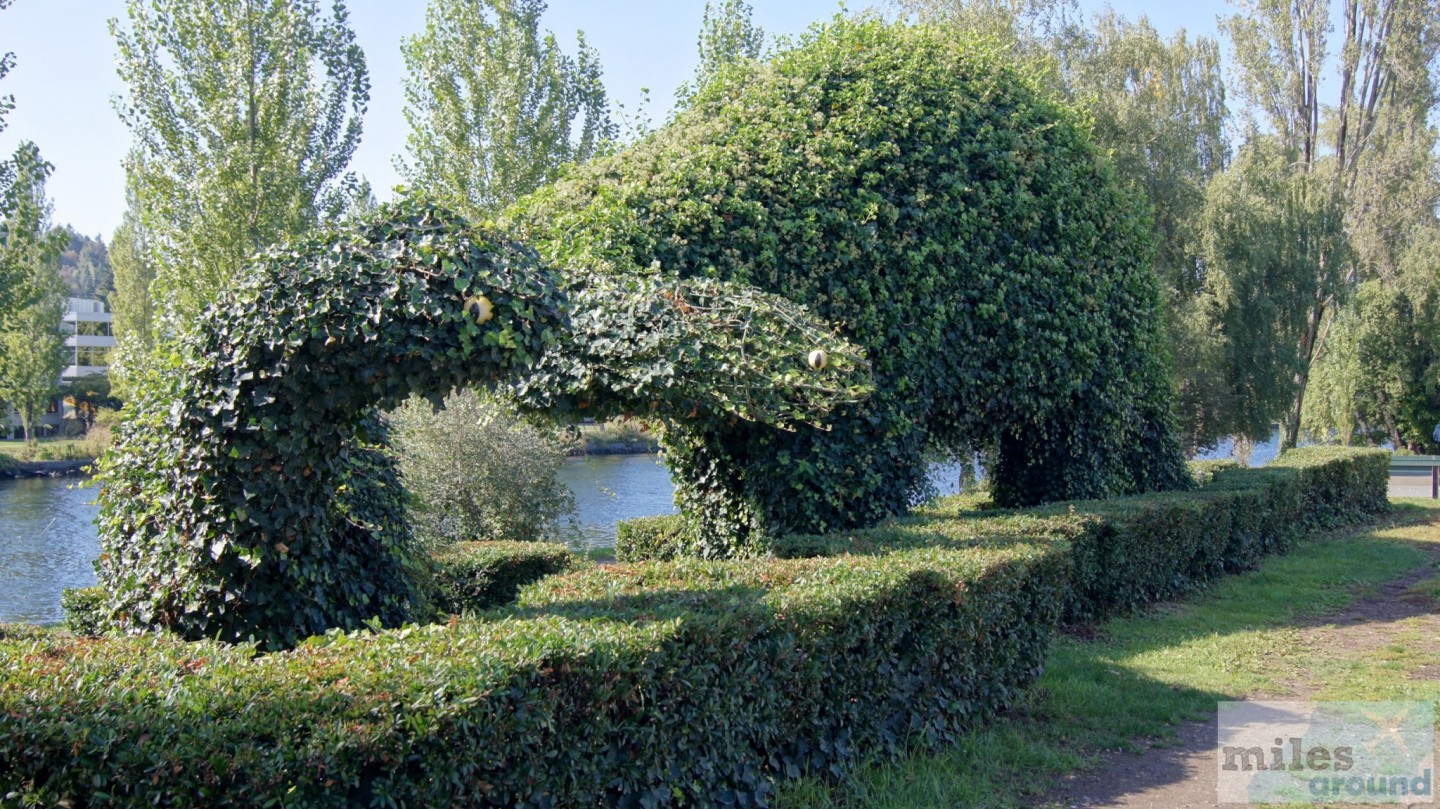
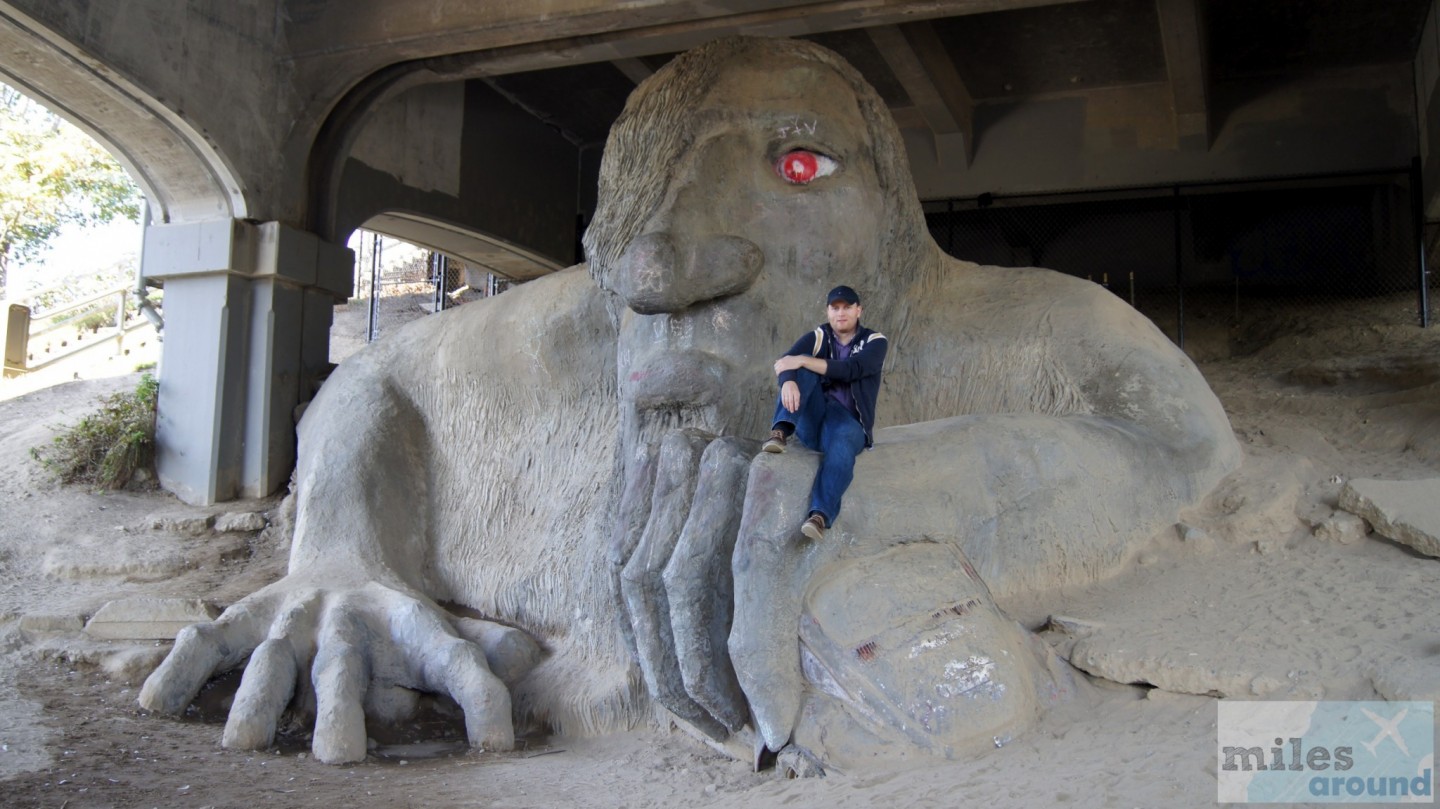
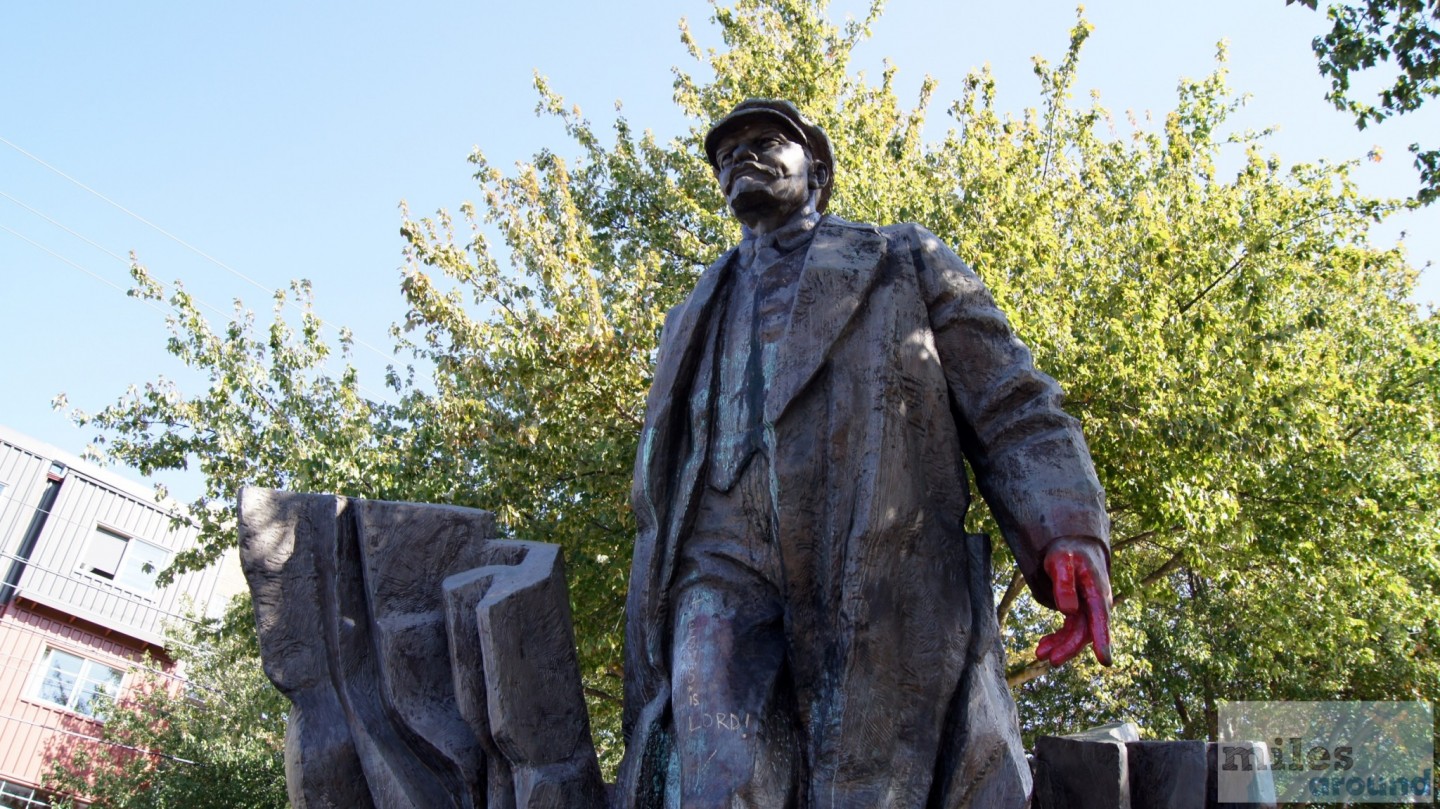
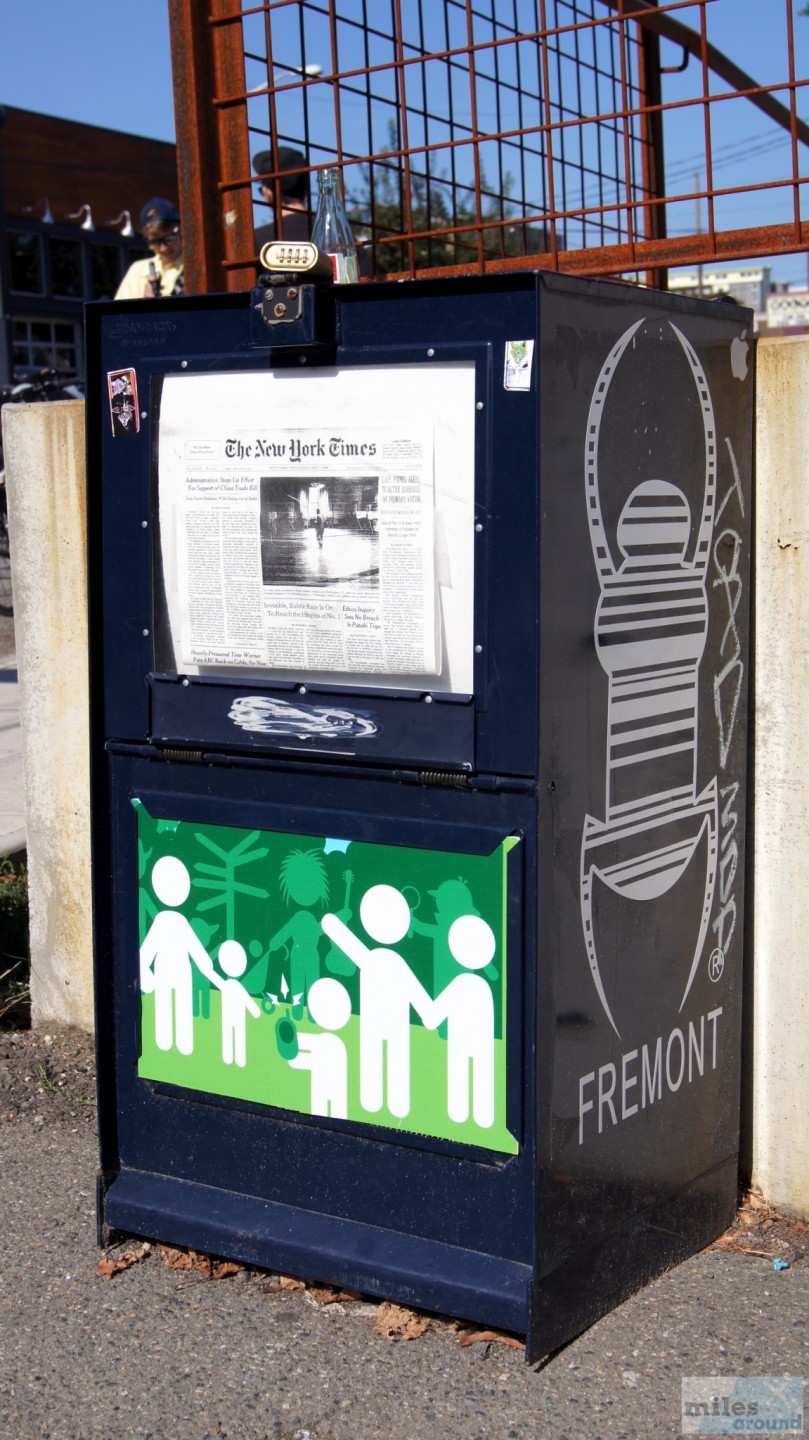
Geocaching HQ
At 2 p.m. sharp, we took the elevator to the 3rd floor of a new office building. Geocaching has had its headquarters here for a few years. On the spot we were very kindly welcomed by Holly (hollywollyoxenfree) receive. She organizes all visits to the headquarters and then looks after the guests.
Today we met with cachers from Texas, California and Belgium. At the beginning we were given an outline of the history of geocaching and some other interesting information. Then we were allowed to look for the special Geocaching HQ cache. Of course, we won't tell you what it looks like here. But it's not that difficult to find. :) In any case, there is a logbook, a photo album and a countless amount of trackables (TBs). There is a photo booth for the album. Here we took four funny instant photos and then stuck them into the album. Afterwards we made ourselves comfortable at a picnic table and signed the logbook. Here we also had time to discover some of the countless TBs. We also put down two TBs that we had brought with us from Germany and took two others with us. On a monitor behind the picnic table you could see where a cache was currently being logged on an interactive Google Maps application. Pretty cool how you can see a different part of the world in just 20 seconds. We noticed that there were many German-language logs.
Derek, one of the first of the current 78 employees, brought us two special TBs. He received this from a school class in Colorado who were using it to do an interactive organic experiment. There are four TBs, which are divided according to the components of the DNA. We were given thymine and adenine. Anyone who picks up one of these TBs should take a photo of themselves and the TB. The seventh graders then use the different faces to analyze the different DNA effects of the individual countries and cultures. The group whose TB travels the furthest will receive a pizza party as a prize at the end of the school year.
Holly told us about a new cache type that is currently being tested as a lab cache. This type will be based on iBeacon technology. There was already such a cache at the headquarters, but unfortunately our smartphone or the technology did not work. So we marveled at a few special trackables in a showcase, such as the first TB that was in space on the ISS.
